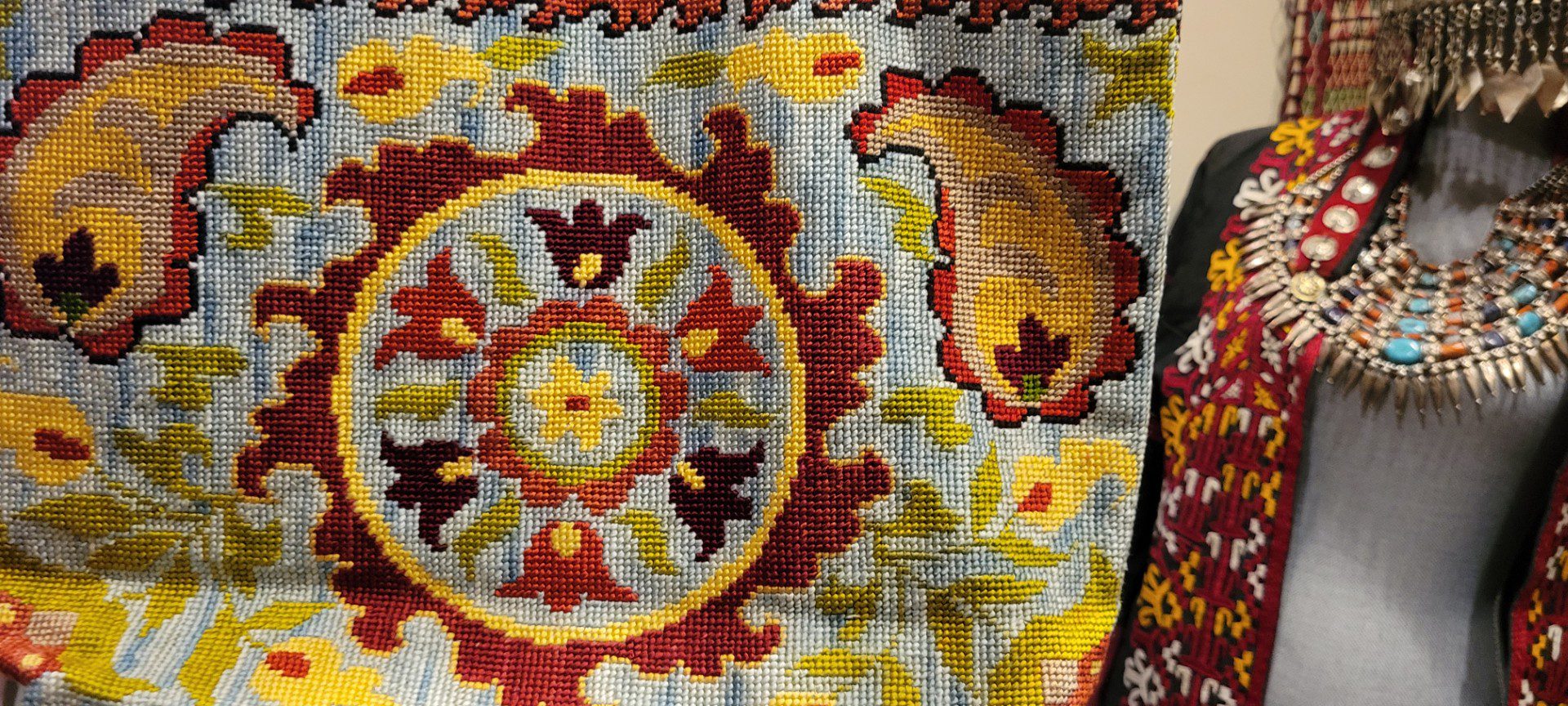By Christine Axsmith
Have you ever walked past that rug store off of Wisconsin and Dumbarton and wonder what was in there?
The Zamani House of Heritage has been a part of the Georgetown retail landscape for 12 years. Its rugs are often displayed on a railing outside the store on Wisconsin Avenue. These hand-loomed beauties are imported from Afghanistan, and bought directly from the native artists.
We’ve all seen it, but few could guess the experience inside.
When you enter the store, the immediate impression is that you have entered a foreign and exotic land. Hand-dyed, hand-woven rugs hang on almost all the wall space, their colors derived from indigo and red flowers. All the dyes are natural and the techniques used to create them are inter-generational.
But it is not just rugs.
Intricate, hand-crafted silver jewelry is also on display on the walls in the back of the shop. Each piece is unique and made by actual Afghan artisans. A variety of necklaces, pendants and earrings shine as you look through the store.
Each spot has an unique treasure: embroidered pillow covers, wall hangings, paintings, purses, jewelry and, of course, rugs. Sheepskin jackets are embroidered with silk thread in the traditional Afghan way, with the fleece on the inside of the jacket and the and the smooth leather on the outside. Traditionally, women embroider the Afghan jacket after the leather is cured by her husband.
As a hub of Afghan culture, there is more to see than decorations. A traditional Afghan instrument, the Rubab, sits on a plush tablecloth. The owner will play it for you, if you ask him nicely.
A Long Cultural History
One thing that isn’t well-known is the story behind this fourth generation small business.
In 1967, the Beatles walked out of a store in London wearing an embroidered Afghan sheepskin jacket and a worldwide craze was born—and so was a business. The Zamani family began their export business then and there. The demand for embroidered Afghan coats exploded, and were later sold by the Beatles in their Apple Boutique.
Jimi Hendrix wore his Afghan coat at the Kensington Olympia in London, a major rock music event at the time. His enthusiasm for the coat was matched by Syd Barrett of Pink Floyd and Pete Townsend of the the Who, both of whom wore Afghan coats while performing onstage.
At one point in the 1970s, Afghan coats were the country’s biggest export.
Annual trips to Afghanistan allowed the Zamani family to purchase handmade rugs, clothes and jewelry directly from the artists.
Later, when King Charles III founded a charity to teach traditional Afghan artistry, Turquoise Mountain, the Zamani family found the perfect source of goods for their store.
Recent events have disrupted that plan, but the store has stayed in contact with a few artists as they hide in nearby countries.
“We give work and jobs to many people. It helps them and their families,” said Feda Zamani, the owner of the store at 3145 Dumbarton St. NW.
As boys, he and his brother were given a needle to begin teaching them about rugs and Afghan embroidery. His grandfather told them, “Use strong thread, and twirl the thread once it is in the needle. Use good material and God will smile on you.” There’s even an Afghan poem about the needle:
Nothing has the power of the needle in the world because it is small and has a small eye (meaning that it is not jealous). At the same time, the needle will stitch clothes for everyone. Without the needle, no one would have clothes.






I recently dealt with Mr. Zamani and he misrepresented many facts about himself, which did not become apparent until after our discussion. For example, he claimed he lived on the block and then I saw he had VA plates. Thankfully, I did not buy anything from him, but I recommend others steer clear. He will make up stories to get his way, and I think the stories shared in this story are at best half truths.
Mr. Feda is a wonderful man who is known and loved by many of the neighbors and customers alike.
For the person leaving negative comments about him, you are obviously confused. Not once have I heard any misrepresentations from Mr. Feda regarding his items, or his personal story. Please stop spreading false accusations and trying to smear this hard working individual.
This store has unusually beautiful and unique silver jewelry with precious stones from Afghanistan. The owner, Mr. Zamani, is delightful. I recommend visiting!